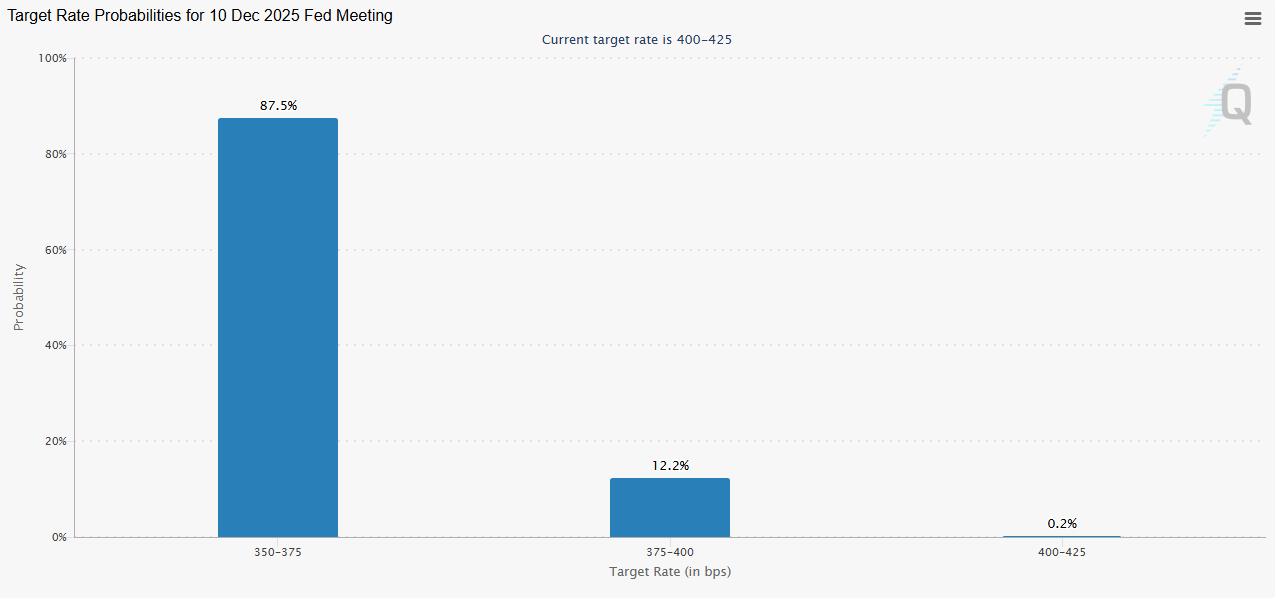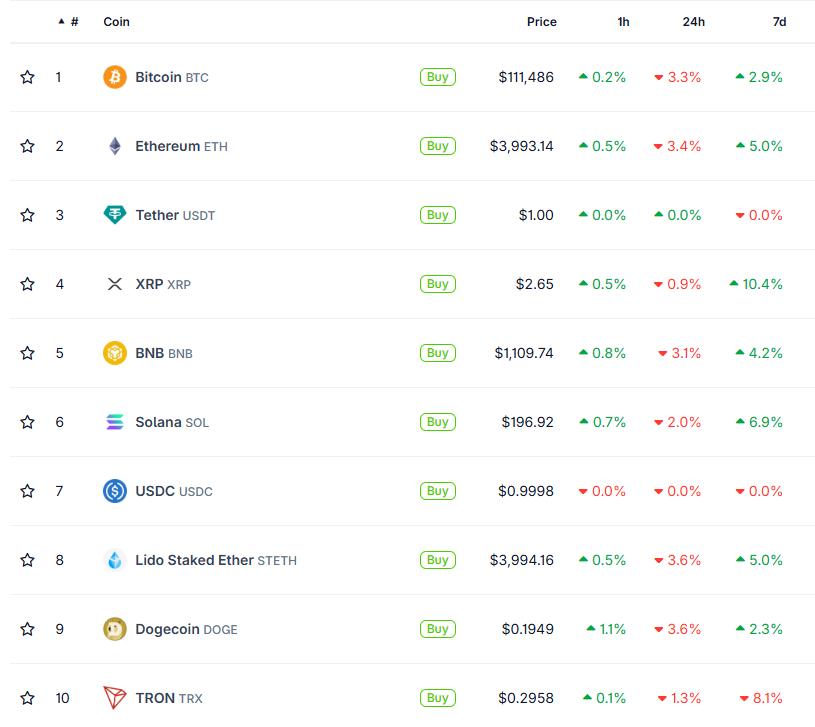The Federal Reserve cut its benchmark interest rate by 25 basis points to 3.75–4.00% on Wednesday, marking its second rate cut this year.
The central bank said economic growth remained moderate, while job creation slowed and unemployment edged up. However, inflation remained “somewhat elevated,” leaving the Fed cautious about further policy easing.
Fed balances inflation risks with labor market risks
The decision also confirmed that the Fed will end quantitative tightening on December 1, meaning it will pause its balance sheet reduction earlier than expected.
The statement stressed that downside risks to the labor market were rising, in contrast to previous meetings that focused primarily on inflation.
The Fed said it would assess upcoming policy “in light of new data” and the “balance of risks” related to its dual goals.
Chairman Jerome Powell and a majority of members supported the move, while two dissented. Stephen Miran supported a larger 50 basis point (bps) cut, citing weaker jobs data.
 Market expectations for rate cuts in December. Source: CME FedWatch
Market expectations for rate cuts in December. Source: CME FedWatchEconomic context
Current indicators show growth remains moderate, but key labor measures are weakening. Unemployment remains low, although the Fed acknowledges it has risen slightly since the summer.
Inflation has edged up since early 2025, reinforcing concerns that prices could remain above the 2% target for longer than expected.
The Futures Contract market is now pricing in a 70% chance of another 25 basis point cut in December.
However, Powell is expected to emphasize a data-driven approach at the press conference.
Prospects for the crypto market
Policy changes could bolster risk appetite in the short term. Bitcoin and major altcoins typically benefit from easing liquidation and falling bond yields.
Prominent KOLs like MicroStrategy's Michael Saylor and Robert Kiosaki previously predicted that Bitcoin price could surpass $150,000 by the end of 2025.
However, Dai inflation could limit overall enthusiasm. If inflation expectations rise again, risk assets — including crypto — could come under renewed pressure from stronger USD flows.
 The crypto market has yet to react to the expected rate cuts. Source: CoinGecko
The crypto market has yet to react to the expected rate cuts. Source: CoinGeckoAnalysts say the balance between easing and inflation will shape the next phase of the crypto market.
Prolonged liquidation support could help Bitcoin break key resistance levels, while a hawkish stance in December could erase those gains.






